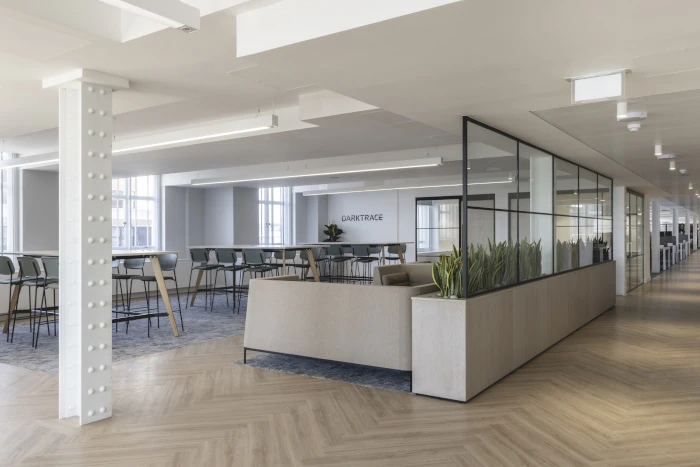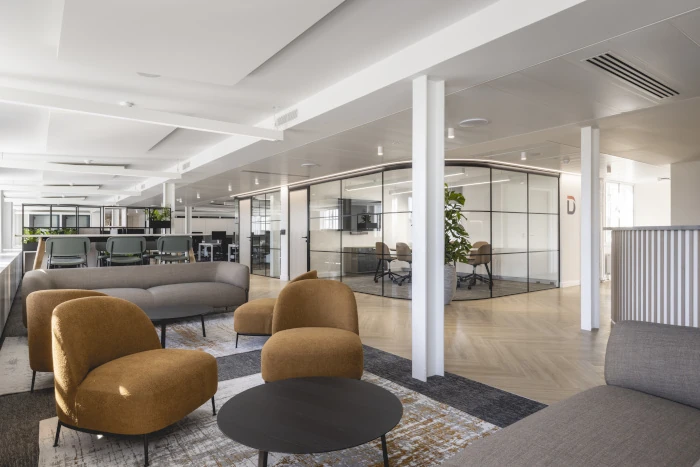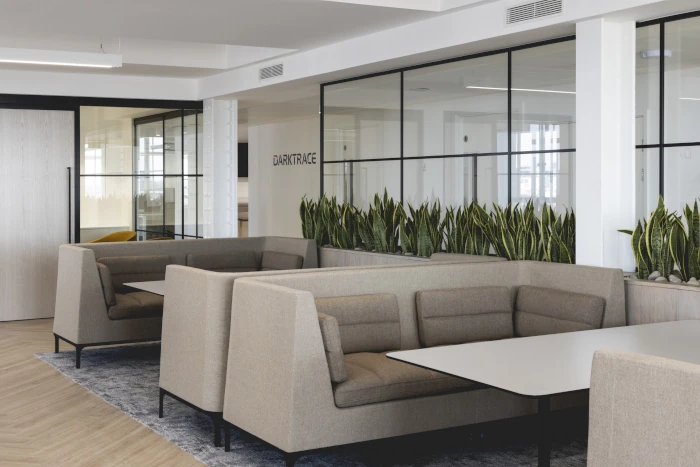Agile Office Space Design
31/10/22< Back to news index

Agile working involves creating workspaces where staff can have maximum freedom and flexibility about where and when they work. This creates a dynamic workforce, and connects people, processes and technology.
The term "agile working" describes the office environment itself. "Flexible working" relates to staff options regarding their hours, patterns and location of work.
Both have major advantages for employees, their employers, and the environment. Workplaces function best when they can be easily adapted to suit the activities required for each task, creating an environment which encourages innovation and enthusiasm for work, so everyone wins.
Physically, the modern agile office usually has: an open-plan layout with adaptable meeting areas, low-level furniture, a standing desk option, and relaxation/informal meeting areas. Staff use the most suitable option for their current task. This increased autonomy improves self-esteem and maximises productivity.

To achieve this, you need to consider the needs of workers doing particular tasks. Formal or impromptu meetings, intense and highly focussed work (alone or in small teams) and collaborative projects all have specific office design requirements. The agile office makes them readily available, improving the staff's cognitive functions and concentration and increasing job satisfaction.
The necessary technology, and suitable places to use it, are also important. Technology that adapts easily to each worker's needs, and is also sustainable, will be the most popular. It's always worth consulting those who will be using the equipment before purchasing, through a staff survey or informal chats with a number of staff.

In the past, conventional office design gave us a noisy working environment with little privacy. Agile offices provide quiet zones for tasks requiring intense focus. This improves the use of the workplace, so is more cost-effective, making the best possible use of space. The agile office is also sustainable, reducing energy costs and the company's carbon footprint.
Agile office space design attracts the best talent; they will want to stay because everyone feels more appreciated in a stimulating workplace. This energises and motivates workers, who feel part of a valuable corporate identity. Their employer has bothered to consider our needs, and created optimum working conditions, which feel comfortable.
Finally, we should also consider health needs of staff. Providing a range of seating options, encouraging the use of stairs rather than lifts, and - where space permits -providing a garden, will all give the opportunity to avoid many of the health problems associated with office work, such as back pain and reduced fitness.